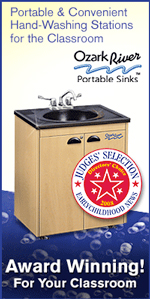Can Anyone Teach?
Joy Harjo, United States Poet Laureate
Jim Greenman was painfully aware of the challenges facing our field, including providing quality care with low-paid staff. Here are his observations in his Exchange article "Living in the Real World: Don't Happy, Be Worried: Connecting Up the Dots." which can be read in its entirety on our home page....
For decades, NAEYC and others have fought against the insulting and debilitating view that "anybody can teach." Yet, it is true today — and will become even more true in the future — "anybody" is teaching. Many centers have had to fill teaching roles with "anybody." Hopefully, though, most programs are not using just anybody, but gentle, kind people who appreciate and know children and enjoy caring for them. Some, perhaps many of these people (given the chance), help children learn and make an effort to help them develop a positive sense of self.
If we are not going to have many teachers to choose from, how do we promote education? The answer is not to create teacher-proof curriculum. Nothing is worse than the "teaching" at children in teacher-directed formats by low-skilled "teachers." It dulls everyone's intellect — adults and children — and leads to oppressive child management practices. Unfortunately, a great many centers throw marginally trained people into the ring as teachers, as if the title and the large print activity guide will act as Dumbo's magic feather. Other centers fortunate to have a few well-trained staff in a few classrooms agonize over quality differences from room to room and fluctuations in quality as these teachers come and go during the day, week, and year.
Teaching environments only work with teachers. In fact, teaching environments in early childhood only work with very skilled teachers. It is not easy to create a place for individual young children in classroom groups to live and learn over a ten-hour day. It is hard to cater to so many different interests, abilities, rhythms, and personalities.
What's the alternative? We can create learning environments, designed to work with staff with few teaching skills. If we can find people who are "good" with children, we can design learning environments that work with those people. In the wilds of homes, backyards, and streets, children play and learn, developmentally appropriately. It is only when we place them in institutional group settings under adult direction that this becomes an issue.
Designing learning environments that are less dependent on teaching requires searching for new models and drawing off old ones. Children's museums, some nature centers, and playgrounds represent settings designed for teacher-less learning environments. Open classrooms and Montessori environments were designed for independent learning with less teacher direction.
What then to expect from most staff? The ability to treat children with respect and gentleness, a willingness to converse with children — listen to them, ask questions based on their activities. With training and experience, perhaps those who stay will develop the skill to ask those questions that will nudge the child toward greater understanding and new challenge.
A learning environment approach can maximize the human talent available to the program because those who do have early childhood training and experience can put that to use in supervision and in developing classrooms — building learning into the environment, designing learning centers and self-directed activities, organizing storage, and staff orientation materials.

This week the Exchange book, Places for Childhoods: Making Quality Happen in the Real World, which includes many of Jim Greenman's provocative Exchange articles, including "Don't Happy, Be Worried: Connecting Up the Dots" is on sale at a 20% discount.
Comply to Hand-Washing Codes with Award Winning Portable Sinks by Ozark River. Self-contained with hot/cold water makes Ozark River Portable Hand-Washing Stations an affordable, versatile alternative to plumbing. Beautiful maple laminate locking cabinet, our Quick Connect™ water supply line and with casters, makes it easy to place the sink wherever you need them.

For more information about Exchange's magazine, books, and other products pertaining to ECE, go to www.ccie.com.
|
© 2005 Child Care Information Exchange - All Rights Reserved | Contact Us | Return to Site
